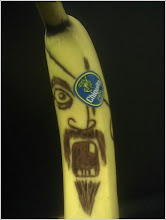Long shot (LS). Shot which shows all or most of a fairly large subject (for example, a person) and usually much of the surroundings.
Extreme Long Shot (ELS) - see establishing shot: In this type of shot the camera is at its furthest distance from the subject, emphasising the background.
Medium Long Shot (MLS): In the case of a standing actor, the lower frame line cuts off his feet and ankles. Some documentaries with social themes favour keeping people in the longer shots, keeping social circumstances rather than the individual as the focus of attention. Establishing shot. Opening shot or sequence, frequently an exterior 'General View' as an
Extreme Long Shot (ELS). Used to set the scene.
Medium shots. Medium Shot or
Mid-Shot (MS). In such a shot the subject or actor and its setting occupy roughly equal areas in the frame. In the case of the standing actor, the lower frame passes through the waist. There is space for hand gestures to be seen.
Medium Close Shot (MCS): The setting can still be seen. The lower frame line passes through the chest of the actor. Medium shots are frequently used for the tight presentation of two actors (the two shot), or with dexterity three (the three shot).
Close-up (CU). A picture which shows a fairly small part of the scene, such as a character's face, in great detail so that it fills the screen. It abstracts the subject from a context. MCU (Medium Close-Up): head and shoulders.
BCU (Big Close-Up): forehead to chin. Close-ups focus attention on a person's feelings or reactions, and are sometimes used in interviews to show people in a state of emotional excitement, grief or joy. In interviews, the use of BCUs may emphasise the interviewee's tension and suggest lying or guilt. BCUs are rarely used for important public figures; MCUs are preferred, the camera providing a sense of distance. Note that in western cultures the space within about 24 inches (60 cm) is generally felt to be private space, and BCUs may be invasive.
Angle of shot. The direction and height from which the camera takes the scene. The convention is that in 'factual' programmes subjects should be shot from eye-level only. In a high angle the camera looks down at a character, making the viewer feel more powerful than him or her, or suggesting an air of detachment. A low angle shot places camera below the character, exaggerating his or her importance. An overhead shot is one made from a position directly above the action.
Viewpoint. The apparent distance and angle from which the camera views and records the subject. Not to be confused with point-of-view shots or subjective camera shots.
Point-of-view shot (POV). A shot made from a camera position close to the line of sight of a performer who is to be watching the action shown in the point-of-view shot.
Two-shot. A shot of two people together.
Wide-angle shot. A shot of a broad field of action taken with a wide-angle lens.
Tilted shot. When the camera is tilted on its axis so that normally vertical lines appear slanted to the left or right, ordinary expectations are frustrated. Such shots are often used in mystery and suspense films to create a sense of unease in the viewer.
Zoom. In zooming in the camera does not move; the lens is focussed down from a long-shot to a close-up whilst the picture is still being shown. The subject is magnified, and attention is concentrated on details previously invisible as the shot tightens (contrast tracking). It may be used to surprise the viewer. Zooming out reveals more of the scene (perhaps where a character is, or to whom he or she is speaking) as the shot widens. Zooming in rapidly brings not only the subject but also the background hurtling towards the viewer, which can be disconcerting. Zooming in and then out creates an ugly 'yo-yo' effect.
Following pan. The camera swivels (in the same base position) to follow a moving subject. A space is left in front of the subject: the pan 'leads' rather than 'trails'. A pan usually begins and ends with a few seconds of still picture to give greater impact. The speed of a pan across a subject creates a particular mood as well as establishing the viewer's relationship with the subject. 'Hosepiping' is continually panning across from one person to another; it looks clumsy.
Surveying pan. The camera slowly searches the scene: may build to a climax or anticlimax.
Tilt. A vertical movement of the camera - up or down- while the camera mounting stays fixed.
Crab. The camera moves (crabs) right or left.
Tracking (dollying). Tracking involves the camera itself being moved smoothly towards or away from the subject (contrast with zooming). Tracking in (like zooming) draws the viewer into a closer, more intense relationship with the subject; moving away tends to create emotional distance. Tracking back tends to divert attention to the edges of the screen. The speed of tracking may affect the viewer's mood. Rapid tracking (especially tracking in) is exciting; tracking back relaxes interest. In a dramatic narrative we may sometimes be drawn forward towards a subject against our will. Camera movement parallel to a moving subject permits speed without drawing attention to the camera itself.
Hand-held camera. A hand-held camera can produce a jerky, bouncy, unsteady image which may create a sense of immediacy or chaos. Its use is a form of subjective treatment.
Process shot. A shot made of action in front of a rear projection screen having on it still or moving images as a background.
Tuesday, 30 March 2010
Subscribe to:
Post Comments (Atom)

No comments:
Post a Comment